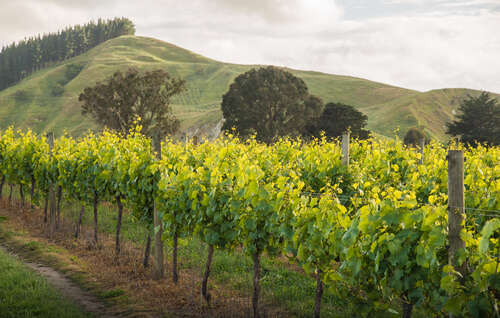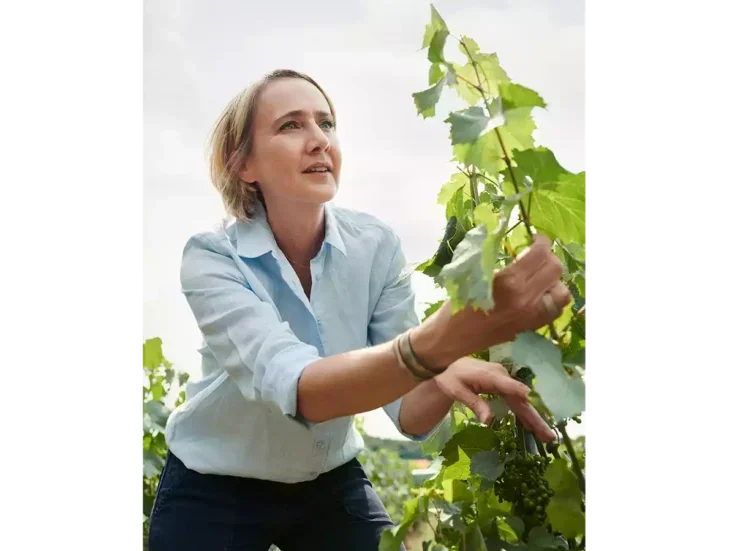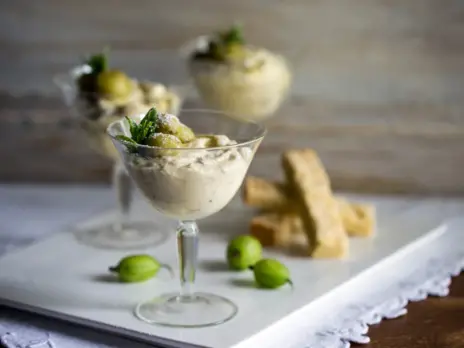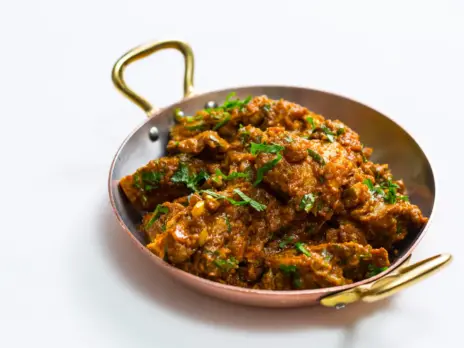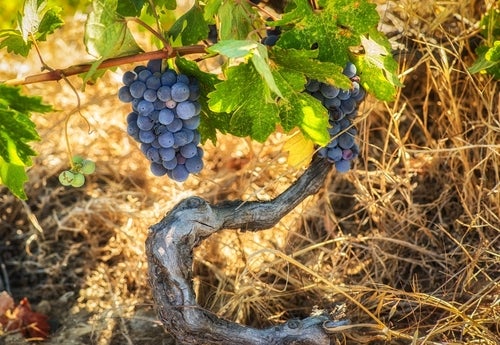
Late ripening, slow sugar accumulation, and stubborn acid retention are factors long held against certain cépages and contributory to their disregard, denigration, or even demise. Yet in the face of climate change, these traits all count as pluses. Add the criteria of drought- and heat-resistance, and one has a pretty good outline for optimal future grapes.
“Future grapes” immediately suggests new crossings. And there are legions of those. Much has been made this decade of so-called Piwis. While—as the German-language origin of that abbreviation, standing for “fungus-resistant,” leads one to expect—these got head-starts in Austria, Germany, and Switzerland, they’ve made impressive inroads into vineyards and legislation in France, conspicuously resulting in recent approval of one such crossing for Champagne, and four for Bordeaux. But as their name also makes clear, these crossings weren’t designed to deal with climate change, even if today’s headlines sometimes suggest otherwise. Their recent surge in exposure is largely due to an EU ordinance proposed in 2022 to limit environmental degradation, specifically loss of biodiversity, by mandating a 50% reduction (100% in some regions) in fungicides by 2030. After reacting in shock, wine growers mobilized to oppose that plan, and last year the proposal was shelved. But Europe’s wine growers rightly anticipate that mandatory fungicide reduction is coming.
Crossings designed to deal with climate change are in the works, as are trials in genomic editing based on potential isolation of genes that convey specific traits. But GMOs are bound to remain controversial, and considerable time elapses in testing crossings before any literally bear fruit, much less enough of it and in enough places that vinous potential can be adequately assessed. Nor has clonal development—which is at least as time-intensive—until recently reflected the challenges of climate change. Piwis, at least, have been around for long enough that in several countries many vintages’ worth of favorable gustatory evidence has accumulated. But there is no getting around the fact that such grapes won’t replicate results familiar from traditional cépages, as recognized by French authorities in strictly capping their proportion in AOC wines. Meanwhile, what of “once and future” grape varieties, ones whose virtues are confirmed not just by long-established if sometimes scant vineyards but also by historical records?
Cépages, magic beans, and buried treasures
In a Hasidic tale (on which Kafka riffed), an impoverished rabbi seeks treasure under the perpetually guarded Charles Bridge in distant Prague, only to be tipped off unwittingly by the guardsman that treasure lies beneath the rabbi’s own hearth. One lesson of this parable should resonate with anyone seeking, in the face of climate change, to revive, revisit, or recover species, cultivars, or genetically distinct subpopulations (aka “deems”): Do not neglect your own backyard! Late 20th- and early 21st-century planting decisions have instead regularly reflected a “magic beans” perspective: coveting grapes already known to produce world-renowned—or at least trendy—wines. The result is often knockoff or caricature; sometimes outright failure due to disparate terroir; sometimes the debasement of a grape’s reputation as varietally labeled wines proliferate; and frequently, disregard or displacement of well-adapted local varieties, as illustrated by California’s once most widely planted cépage, Zinfandel. For some half a century, its champions made the gustatory case for this drought- and heat-resistant, peculiarly high-acid black grape variety. But much of what vine surface remains is down to a late 20th-century market for pink, soda-poppy “white Zin,” since which, dry-farmed Zinfandel vineyards—many ancient—have been steadily replaced by fashionable clones of “magic beans” Cabernet and Pinot, sustained through ultimately unsustainable irrigation.
Not that the “magic beans” approach has always proven misguided. No wine lover denies that specific vinous virtues accrue to Pinot Noir, or that growers inspired by its success in Burgundy have established formidable traditions of their own in certain places. Moreover, modest success with famous widespread grapes has sometimes been a door-opener for indigenes. When Planeta Chardonnay debuted in 1994, it was the first Sicilian wine to receive prominent international exposure. “It would have been very hard at the time for me to sell indigenous,” relates Francesca Planeta. Today, Sicily is among the wine world’s (metaphorically) hottest regions of origin, thanks in no small part to its local varieties but also thanks to Planeta Chardonnay having put the island on wine lovers’ mental maps. “When my father introduced Cabernet to this country in 1981,” says Andi Kollwentz, “nobody would have been prepared to pay a high price for an Austrian Blaufränkisch.” The fastest route to being taken seriously was seen by Austria’s red-wine pioneers to lie in demonstrating that they, too, could render wines directly comparable to international benchmarks. Fortunately, before long, that “we too” mentality gave way to mining the potential of Blaufränkisch, with delicious and distinctly Austrian results.
Such cépages as Aligoté and Welschriesling, Carignan and Cinsault (discussed in this column’s predecessors) hardly demanded literal rediscovery. On the contrary, like Zinfandel, their ubiquity is part of what led them to be held in low regard by connoisseurs and self-styled quality-conscious wine growers. It was their potential—gustatory and viticultural, in the face of climate change —that awaited realization. That this can also be the case with once-ubiquitous, since-marginalized varieties, and that such treasures sometimes indeed lie buried in far-off or obscure places, will be illustrated in this column’s successor.

